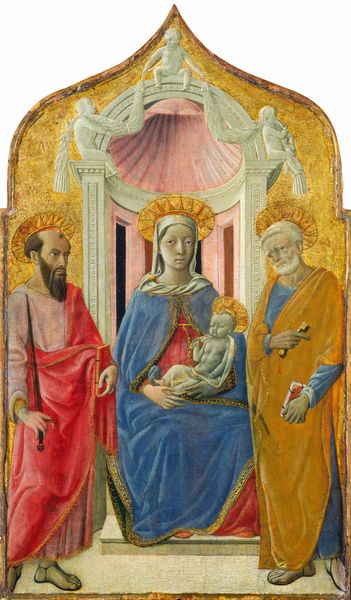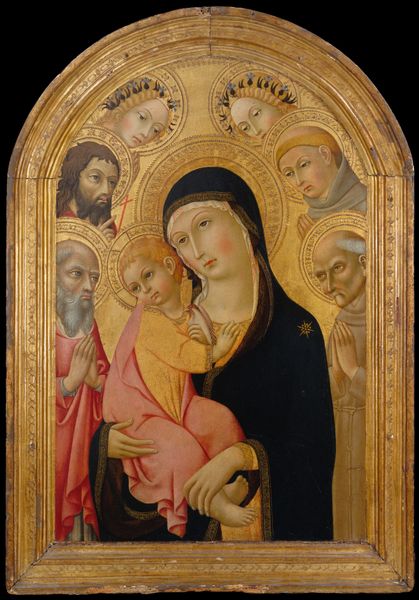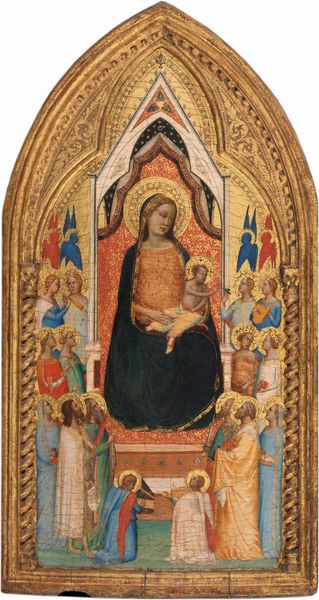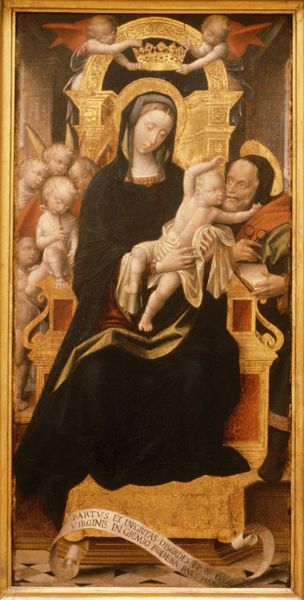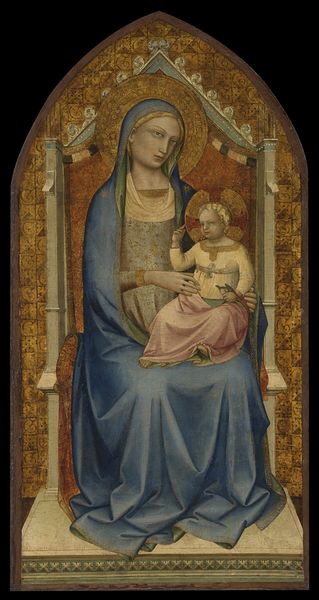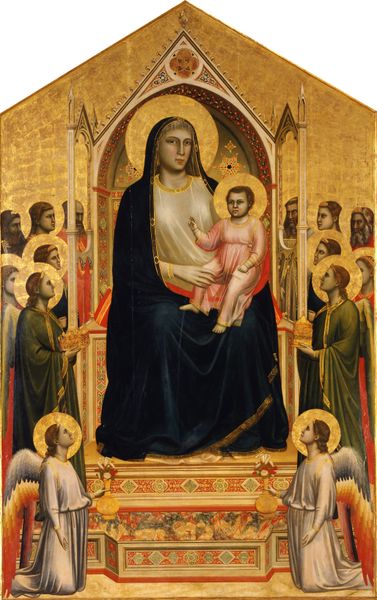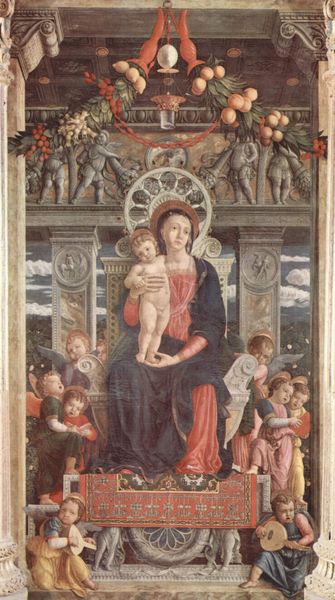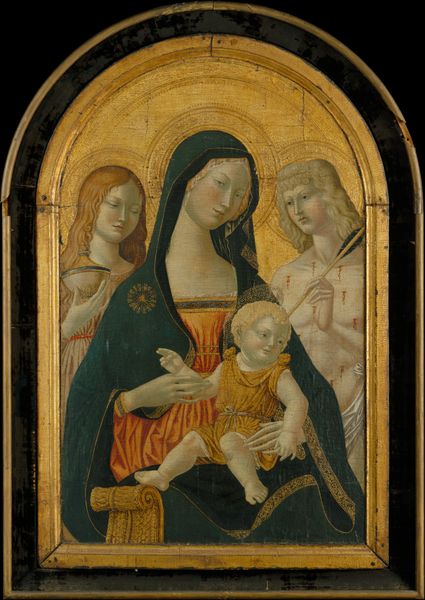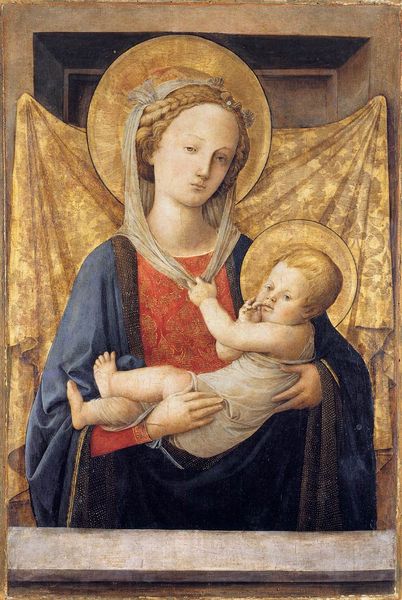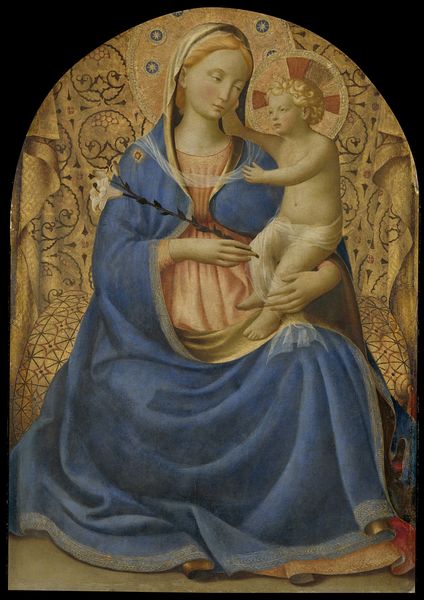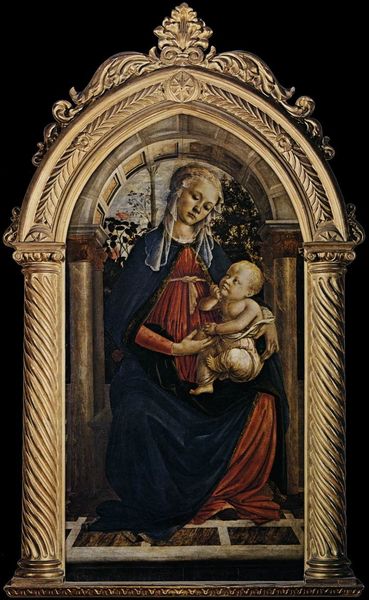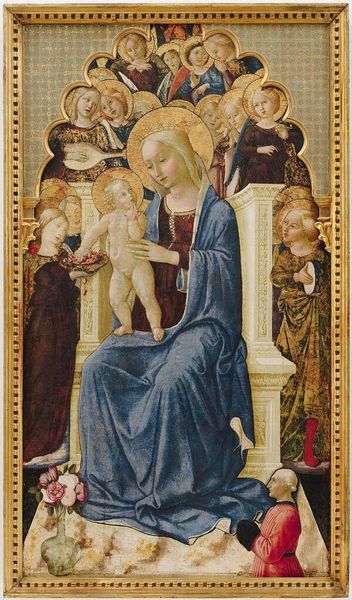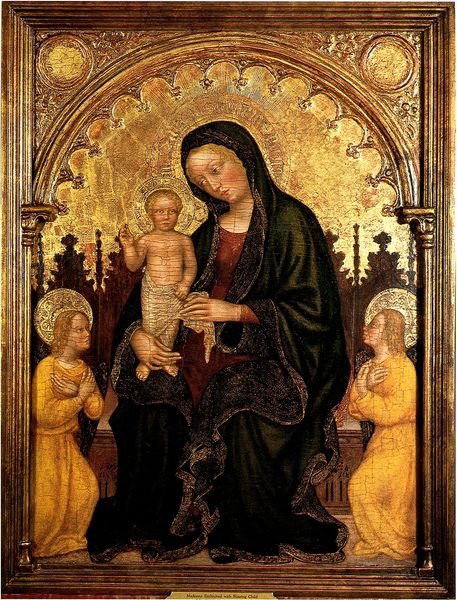
tempera, painting, oil-paint
#
portrait
#
allegory
#
tempera
#
painting
#
oil-paint
#
figuration
#
oil painting
#
group-portraits
#
christianity
#
history-painting
#
academic-art
#
italian-renaissance
#
early-renaissance
#
angel
#
christ
Copyright: Public domain
Masaccio painted this altarpiece, The Madonna and Child with Saint Anne, around 1424 using tempera on wood. Now, tempera isn't like the acrylics or oils we use today; it's made by mixing pigment with egg yolk. The character of tempera has significantly influenced the appearance of the artwork. Tempera dries very quickly and doesn't blend as easily as oils, so Masaccio would have had to work fast, applying thin layers and cross-hatching to build up the colors and forms. This technique gives the painting a crisp, detailed look. The matte finish of tempera also means the colors remain vibrant and pure, and the gold leaf details would have added to the visual richness. Think about the labor involved in creating such a piece. From grinding pigments to preparing the wood panel and applying the delicate gold leaf, each step demanded skill and patience. This process was tied to the economy of the time, and Masaccio’s mastery elevated him within the artistic hierarchy, blurring the line between craft and fine art.
Comments
No comments
Be the first to comment and join the conversation on the ultimate creative platform.
